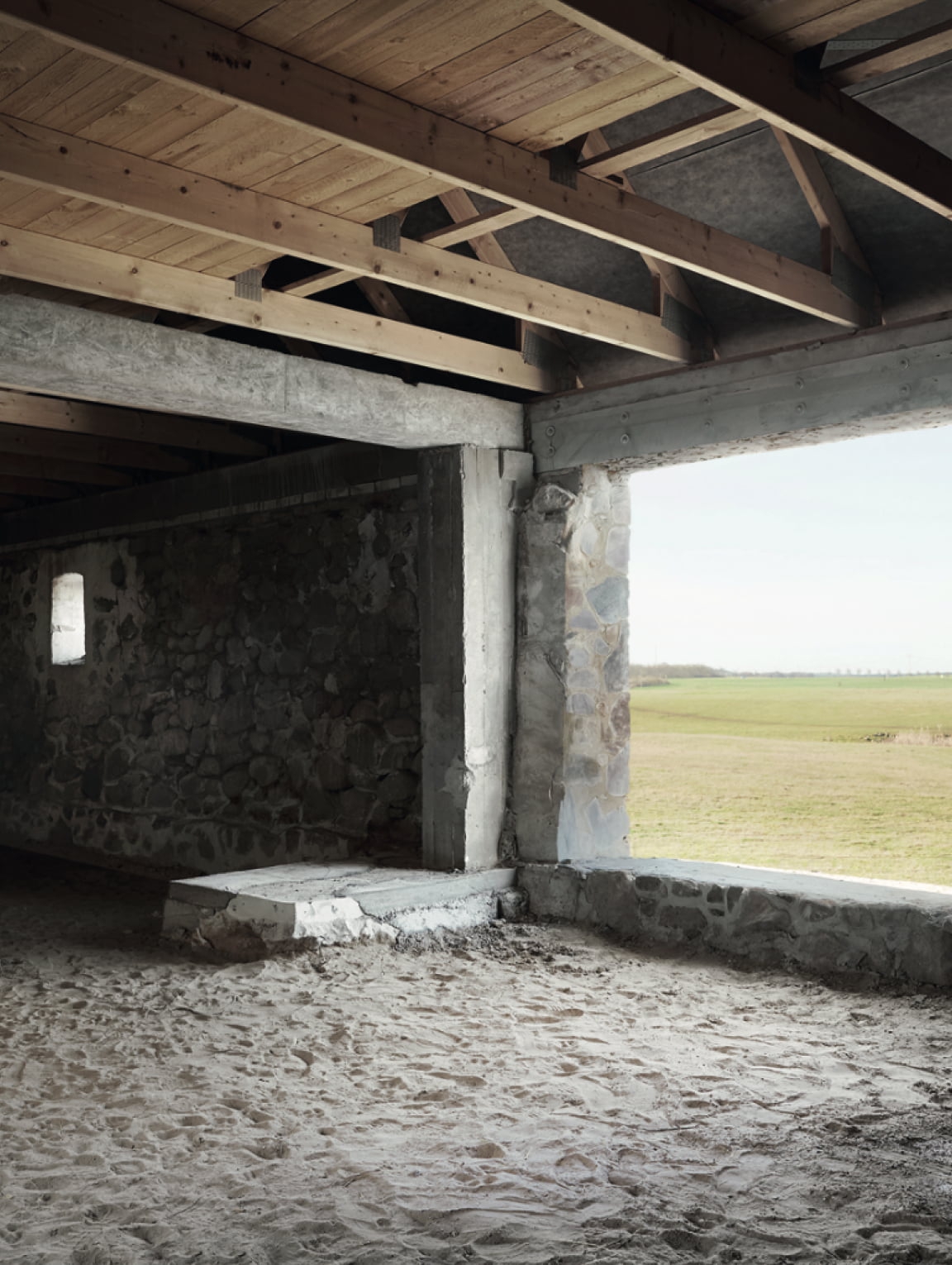„In the shift from the doable to the desirable, the solution lies in cooperatively combining the experimental, the fundamental and the digital with ecological ideals so that a meaningful whole emerges.“
Manifest (DE)
Baukonstruktion schaut auf alles architektonische Handeln aus dem Moment der Realisierung heraus. Damit ist ihr Wissens- und Vermittlungsgebiet tief verwurzelt in den einzelnen Anforderungen des Lastabtrages, der Bauphysik unter Berücksichtigung sich verändernder klimatischer Bedingungen, des Wärme-, Schall- und Brandschutzes und nicht zuletzt in der Thematisierung der Ressourcenverbräuche, Herstellungsprozesse und des Bauablaufs. Die gesamte Komplexität der Anforderungen in eine verantwortliche Bauproduktion zu überführen, löst im Entwurfs- und Konstruktionsprozess multiple Dialoge aus, wenn wir wirklich über Architektur sprechen.
Drei Fragen –subjektiver, qualitativer und gesellschaftlicher Natur– sind über das rein Technische hinaus in jedem Projekt zu lösen. Sie betreffen den Zusammenhang aus konstruktiver Verfasstheit und architektonischem Ausdruck, wie ihn Andrea Deplazes als grundlegend benennt. (vgl. Andrea Deplazes, Architektur Konstruieren, Vom Rohmaterial zum Bauwerk - Ein Handbuch, Birkhäuser, 2005, 10). Zum einen scheint die persönliche Frage auf, nach dem spezifischen Verhältnis zur Konstruktion, zum anderen die strukturelle Frage, nach dem, was aus den konstruktiven Themen heraus entwurfsgenerierende Kraft entwickelt? In diesem Diskurs erweitert die dritte und überdringliche Frage, die der ökologischen Folgen, den Fokus in die Grundlagenforschung zur Vielfalt der Konstruktionen mit dem Ziel einer wahren Nachhaltigkeit. Ohne die Innovationen der Baukonstruktion werden wir die Bauten der Zukunft nicht erschaffen können. Hier müssen sich Lehre und Forschung neu aufstellen, um federführend den konstruktiven Entwurfsprozess zu rekalibrieren. Im Wandel vom Möglichen zum Angestrebten gilt es, bereits im Entwicklungsprozess kooperativ das Experimentelle, das Einfache und das Digitale mit den ökologischen Idealen so zu verknüpfen, dass ein sinnfälliges Ganzes entsteht. Das intensive Oszillieren zwischen Idee, Konstruktion und Ressource provoziert in dieser Debatte die Erfindung gänzlich neuer personæ auf der Weltbühne architektonischer Qualitäten.
Konzeptuell verlässt dabei der Umgang zeitgenössischer Werke oftmals das klassische Verständnis der Durchwesung bis ins Detail (vgl. Adrian Forty on Mies van der Rohe in Words and Buildings: A Vocabulary of Modern Architecture, Thames & Hudson, 2000, 276) und zeigt sich als erweiterungsfähiges Rhizom im Sinne der lebendigen Sprache Architektur. In der Vielstimmigkeit der Antworten und ihrer Kombinationen wird sichtbar, wie sich die Benennung des Instituts zum Postulat formiert: Baukonstruktion, pure Baukonstruktion.
Helga Blocksdorf 09/2022
Manifest (EN)
Building construction examines all architectural actions from the perspective of their moment of realisation. This means that its field of knowledge and mediation is deeply anchored in the individual demands of load transfer, structural physics (as tied to changing climatic conditions), thermal, noise and fire insulation, and not least in addressing the issues of resource consumption, production processes and building procedures. If we genuinely want to talk about architecture, transferring the overall complexity of these requirements into responsible building production triggers multiple dialogues.
Above and beyond the purely technical aspects, three questions – subjective, qualitative and social in turn – have to be resolved in any project. These in turn revolve around the correlation between constructional coherence and architectural expression, as given by Andrea Deplazes as primary determinants. (in Andrea Deplazes, Constructing Architecture - Materials, Processes, Structures. A Handbock, Birkhäuser, 2005, 10). On the one hand the personal question arises, regarding one’s specific relationship to construction; and on the other the structural question, concerning the design potential and its force that emerges from constructional topics. Within this discourse, the third and most urgent question, namely that of ecological impact, necessitates extending construction to include basic research into the diversity of those building methods that are truly sustainable. Without innovations in building construction we will be unable to create the buildings of the future. This is where teaching and research have to realign themselves in order to play a lead role in recalibrating the structural design process. In the shift from the doable to the desirable, the solution lies in cooperatively combining the experimental, the fundamental and the digital with ecologically ideals so that a meaningful whole emerges. In this debate, the intense oscillation between ideas, constructions and resources can stimulate the invention of completely new personas on the world stage of architectural qualities.
With this the treatment of contemporary projects often diverges from the classical understanding of a “Durchwesung” down to the details (see Adrian Forty on Mies van der Rohe in Words and Buildings: A Vocabulary of Modern Architecture, Thames & Hudson, 2000, 276) and manifests itself as extendable rhizome in the sense of living architectural language. The polyphony of answers and their combinations makes it evident how the naming of the institute forms itself into a postulate: building construction, pure building construction.
Helga Blocksdorf 09/2022
